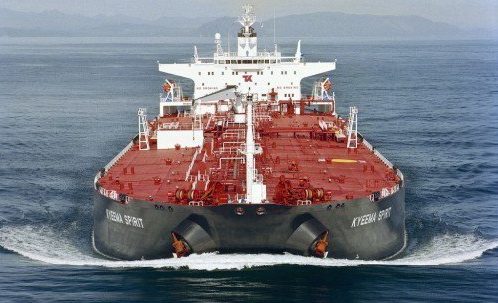McQuilling gives its take on the tanker markets through to 2023

Tanker analysts at McQuilling have published a market outlook through to 2023 warning that global oil demand growth is set to plunge. The 200-page report provides a five-year spot and time charter equivalent (TCE) outlook for eight vessel classes across 24 benchmark tanker trades, plus four triangulated trades. Also included in the report is a five-year asset price outlook as well as a one and three-year time charter rate forecast through 2023.
Global oil demand growth is likely to decelerate over the forecast period, McQuilling predicted, down to 860,000 barrels a day in 2019 before falling further to just 394,000 barrels per day by 2023. Global crude supply growth is similarly projected to slow down, rising by 830,000 barrels per day in 2019 amid downward pressure from OPEC production cuts, offset by gains in North American and European output.
Crude and residual fuel ton-mile demand is projected to increase by about 0.9% on an annual basis throughout the forecast period with a decelerating trend observed in the outer years. McQuilling projects annualised growth of 2.0% and 2.3% for the LR2 and LR1 sectors through 2023 and just below 1.6% for MR2 tankers.
McQuilling anticipates freight rates in 2019 to appreciate marginally; however, support for TCEs will stem from lower bunker prices with VLCCs averaging $26,800 a day and suezmaxes averaging $18,800 a day. However, McQuilling sees a much tighter balance for VLCCs in 2022 with earnings climbing to $33,700 a day.
The story is quite different on the clean side of the market as supply fundamentals improve with growing demand earlier in the cycle. Spot market earnings in the LR2 and LR1 sectors are projected to average $17,100 a day and $16,700 in 2019, respectively. MR earnings on a roundtrip basis are, in general, expected to rise in 2019 with TC2 TCEs averaging $6,600 a day; however, higher earnings of $14,500 a day can be attained on the basis of the Atlantic Basin triangulation, according to analysis from the American firm.
For time charters, McQuilling says one-year and three-year VLCC rates should average $31,500 a day and $32,000 a day in 2019, respectively.
McQuilling’s 2019 price forecast for the five-year old crude tanker sectors sees VLCC values averaging $66.1m, a 5.4% increase from the 2018 average price of $62.7m. Modern suezmax tankers are projected to demand $45m in 2019 with further appreciation to $56.1m in 2023.
Clean tankers of this age group are expected to see higher prices relative to their 2018 averages. For the LR2 space, McQuilling is forecasting a 2019 average price of $37.8m, a 5.2% increase from the average price recorded in 2018, while the LR1 sector is expected to see larger gains of 14% year-on-year to average $32.7m. The MR2 tanker is likely to appreciate 15% to $30.7m in 2019.

How do asset prices and TCEs appreciate in a plunging oversupplied market? Maybe for product tankers due to a potential increase for LSF and lower orderbook but what about the remaining asset classes?